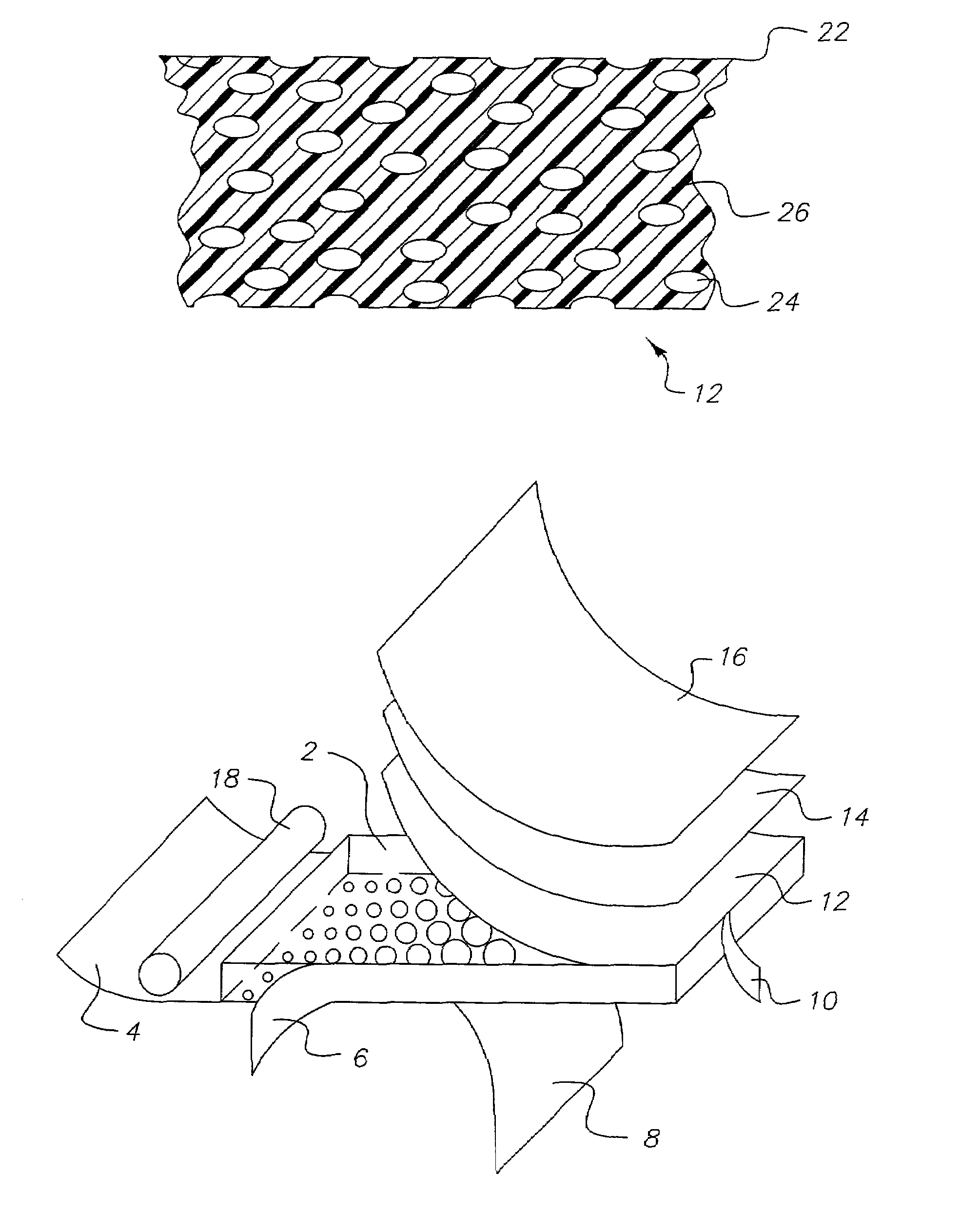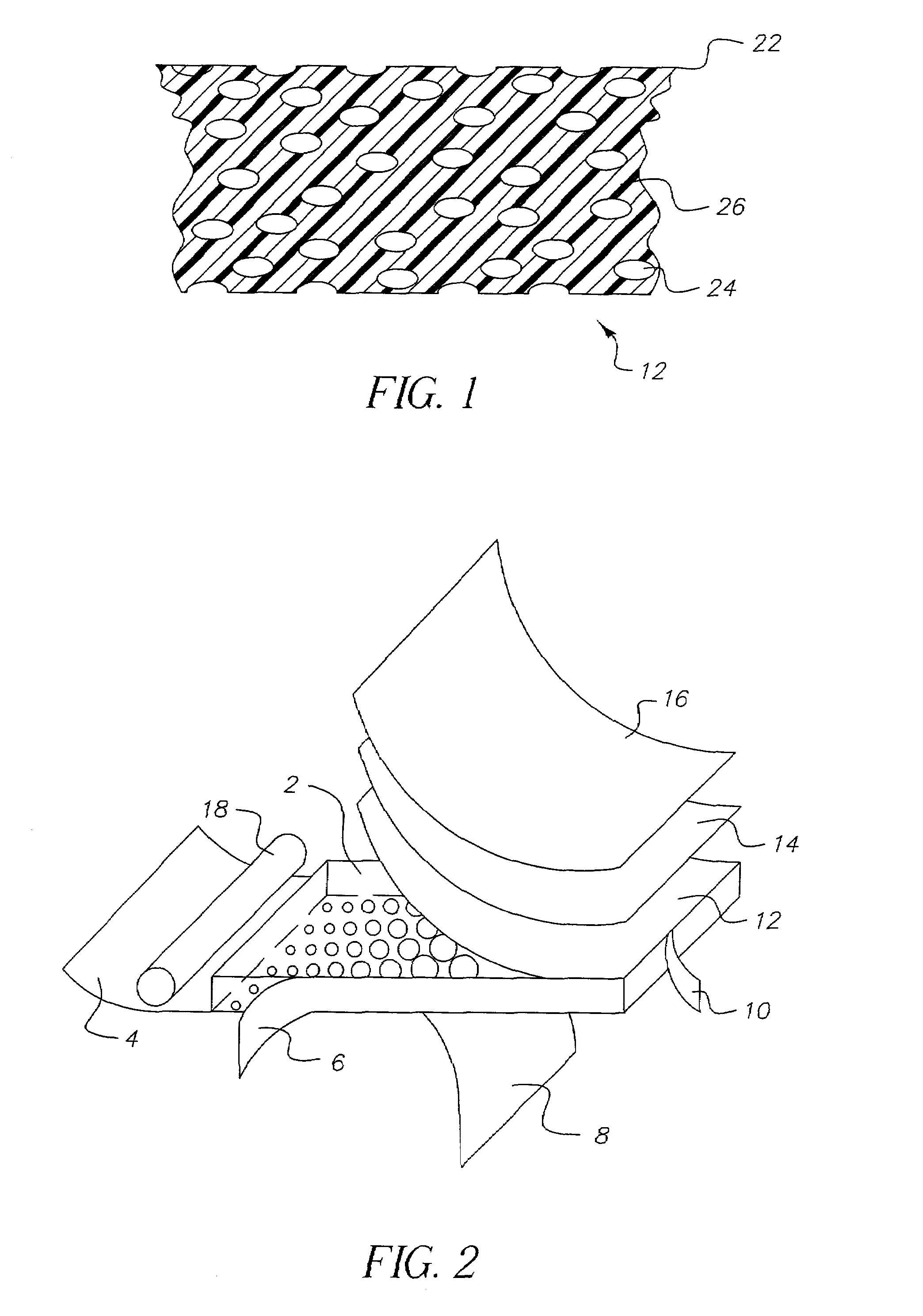Microvoided light diffuser
a diffuser and micro-void technology, applied in mechanical devices, lighting and heating devices, instruments, etc., can solve the problems of lowering the efficiency of the optical system, high backscattering, and the need for air contact, and achieve the effect of improving the light transmission
- Summary
- Abstract
- Description
- Claims
- Application Information
AI Technical Summary
Benefits of technology
Problems solved by technology
Method used
Image
Examples
example 1
[0082]A transparent amorphous film composed of two layers having an overall width of 16 cm was manufactured by a co-extrusion process. One of the layers, hereafter referred to as layer (A), was composed of poly(ethylene terephthalate) (“PET”, commercially available from Eastman Chemical Company as Eastapak #7352). The intrinsic viscosity (I.V.) of the PET 7352 resin was 0.74. This layer was 737-864 μm in thickness. The other layer, hereafter referred to as layer (B), was composed of PET (commercially available from Eastman Chemical Company as Eastapak #9921) impregnated with a voiding agent. The intrinsic viscosity (I.V.) of the PET 9921 resin was 0.80. This layer was 25-152 μm in thickness.
[0083]The voiding agent was created as follows. A 27 mm twin screw compounding extruder heated to 275° C. was used to mix polystyrene beads cross-linked with divinylbenzene with PET 9921. The beads had an average particle diameter of 2 μm. The beads were added to attain a 20% by weight loading in...
example 2
[0086]A transparent amorphous film composed of two layers having an overall width of 16 cm was manufactured by a co-extrusion process as described in Example 1. Layer (A), composed of PET 7352, was 838 μm in thickness. Layer (B), composed of PET 9921 impregnated with cross-linked polystyrene as a voiding agent, was 51 μm in thickness. The polymers composing the layers were processed as described in Example 1.
[0087]The amorphous cast sheet was stretched symmetrically in a similar fashion as described in Example 1. The sheet was stretched symmetrically in the X and Y-directions to an extent of 3 times the original sheet dimensions. The sheet temperature during stretching was 105° C. The processing conditions are shown in Table 1.
example 3
[0088]A transparent amorphous film composed of two layers having an overall width of 16 cm was manufactured by a co-extrusion process as described in Example 1. Layer (A), composed of PET 7352, was 838 μm in thickness. Layer (B), composed of PET 9921 impregnated with cross-linked polystyrene as a voiding agent, was 51 μm in thickness. The polymers composing the layers were processed as described in Example 1.
[0089]The amorphous cast sheet was stretched symmetrically in a similar fashion as described in Example 1. The sheet was stretched symmetrically in the X and Y-directions to an extent of 4 times the original sheet dimensions. The sheet temperature during stretching was 105° C. The processing conditions are shown in Table 1.
PUM
| Property | Measurement | Unit |
|---|---|---|
| thickness | aaaaa | aaaaa |
| elastic modulus | aaaaa | aaaaa |
| average volume | aaaaa | aaaaa |
Abstract
Description
Claims
Application Information
 Login to View More
Login to View More - R&D
- Intellectual Property
- Life Sciences
- Materials
- Tech Scout
- Unparalleled Data Quality
- Higher Quality Content
- 60% Fewer Hallucinations
Browse by: Latest US Patents, China's latest patents, Technical Efficacy Thesaurus, Application Domain, Technology Topic, Popular Technical Reports.
© 2025 PatSnap. All rights reserved.Legal|Privacy policy|Modern Slavery Act Transparency Statement|Sitemap|About US| Contact US: help@patsnap.com



